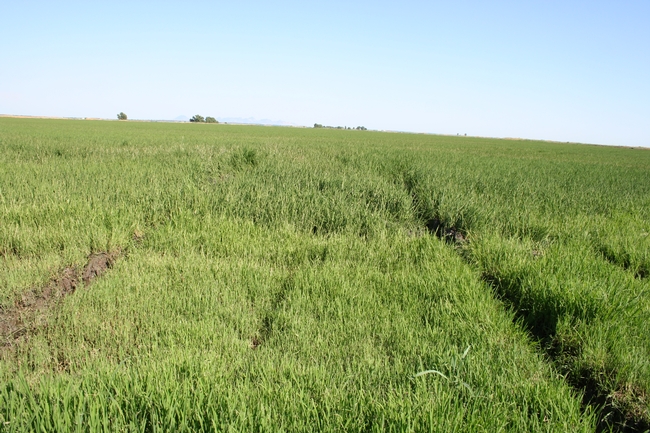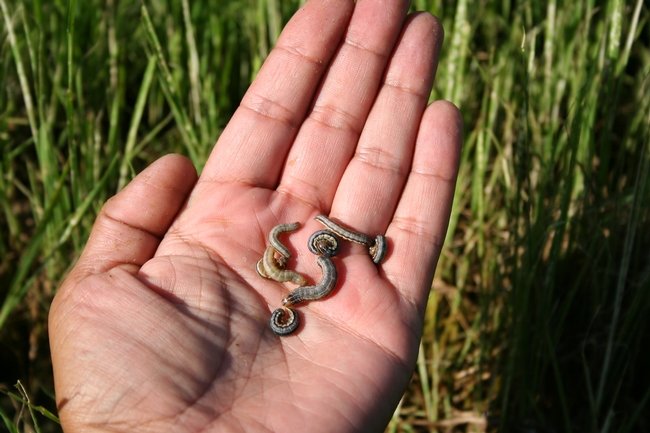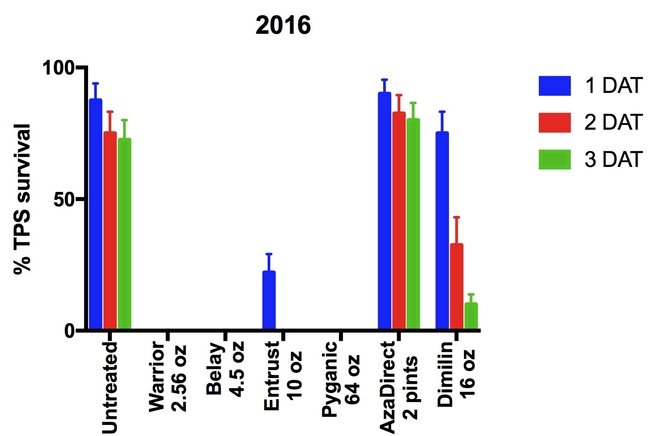- Author: Luis Espino
For two years in a row I have received a report from a PCA in Yuba County of conchuela stink bugs on rice. This is very unusual; I have never seen these stink bugs on rice before, and I'm not very familiar with them. A quick on-line search shows that they are common on the western US; they can be a pest of cotton, alfalfa seed and sorghum, but it has a wide host range. Our UC IPM webiste only lists them as a pest of apple and pear, so I don't know how prevalent they are in agronomic crops in the Sacramento Valley.
Last year they did not affect yield or quality in the field where they were detected. I am not considering these bugs a pest; just incidental at this point. I'd love to hear from other PCAs or growers if they have noticed them in their rice.
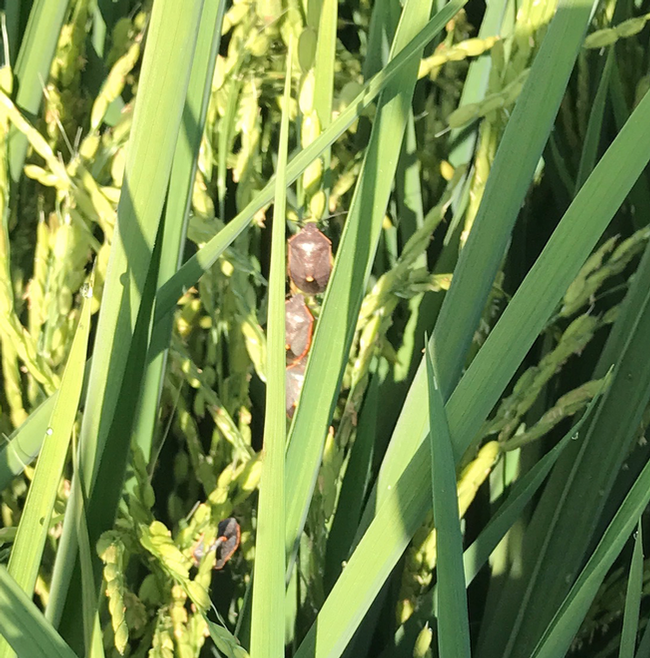
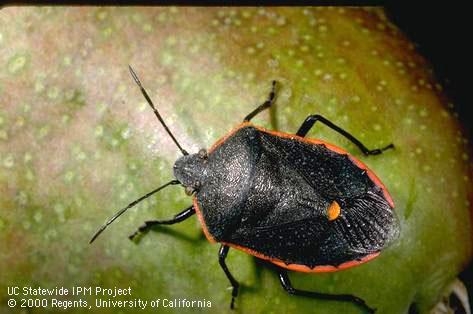
- Author: Luis Espino
I have received reports of significant defoliation due to armyworms from several areas: Glenn, Colusa, Butte and Yolo counties. In most areas the defoliation is severe but the area affected within fields still small.
I inspected a field in Glenn County. The defoliation was severe along levees and in near borders, and worms were about 5th instar. Population was high, similar to 2015.
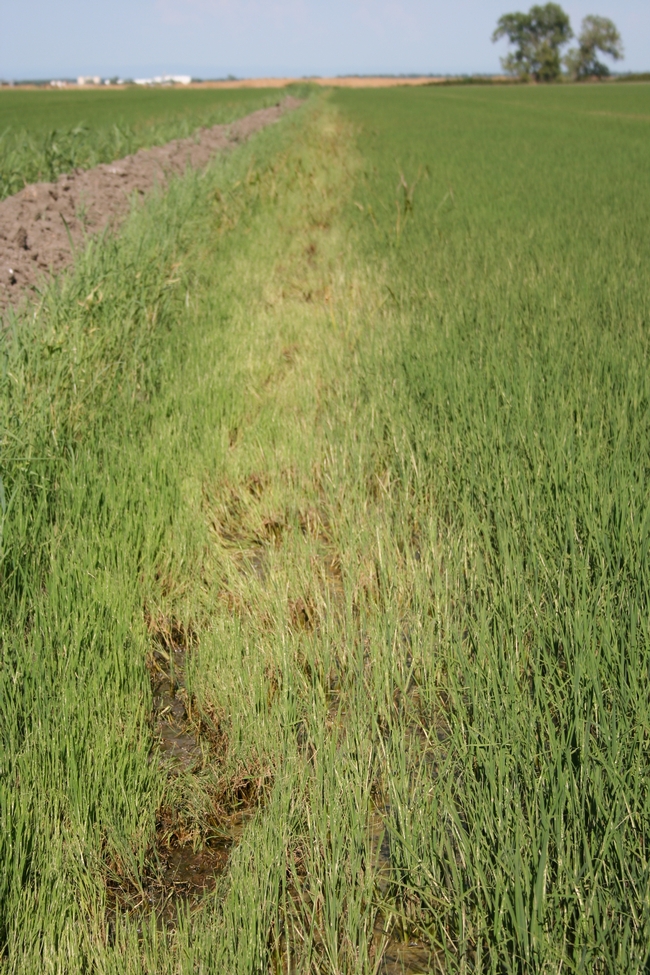 |
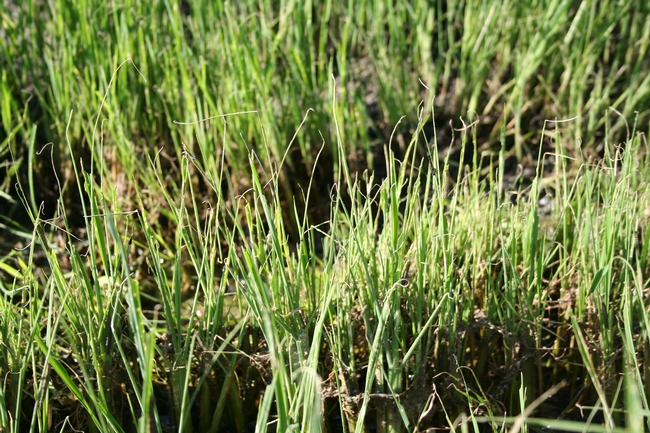 |
Severe defoliation along levee.
Severe defoliation along border of field.
Fifth instar armyworms in Glenn County field, 21 June 2017.
The degree day model predicted 5th instar armyworms will start showing up June 22. The heat from last week sped things up, but the model was really close.
Remember that worms feed the most during 5th and 6th instars, and it will take them 10 days to complete their cycle after reaching the 5th instar. This means that there is plenty of time for them to cause more injury and move to other areas of the field. Keep a close eye and consider a treatment if the worms are still present. Do not wait until worms get bigger, they are harder to kill with any insecticide. It's starting to look like 2015.
- Author: Luis Espino
Number of moths trapped per day is increasing. Numbers are higher in areas where crop diversity is higher. I haven't seen any worms yet, but they are expected by the end of the month. At this point, moths may be mating and laying eggs on weeds and other plants in the area, including rice. This week I received a picture from a PCA of what seemed to be armyworm eggs laid in a rice seedling. No worms are expected on rice until late June or early July. In 2016, worms were observed in fields only after catches were around 20 monts/trap/day.
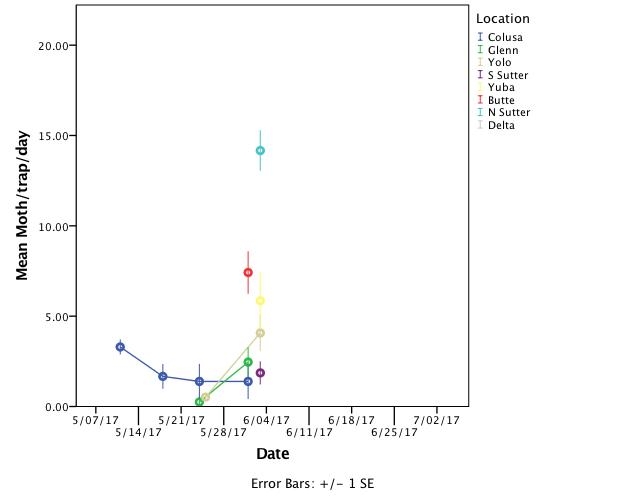
- Author: Luis Espino
I have set up seven armyworm pheromone traps in the Sacramento Valley, and Michele Leinfelder-Miles is monitoring one trap in the Delta. Last year the traps showed a distinctive peak mid August, when worms started causing problems during heading. This year, we will start monitoring earlier and so we will try to identify the peak that corresponds to when worms start feeding on foliage in late June - early July.
I will publish the results of the monitoring weekly or biweekly on the UC Rice On-line website and I will sound the alarm when monitoring efforts need to be increased to make sure infestations don't go unnoticed.
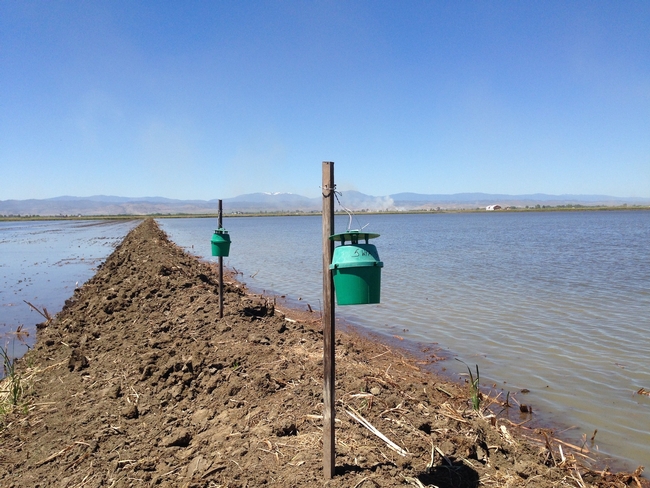
- Author: Luis Espino
A FIFRA Section 2(ee) Recommendation has been issued for control of tadpole shrimp (TPS) using Dimilin 2L. The recommendation states to use Dimilin two to 10 days after the field is flooded; it also states that Dimilin does not appear to control adult TPS.
Dimilin is an insect growth regulator. In many insects, it interferes with the molting process of immatures. In rice water weevil, it sterilizes adult females and also kills eggs. TPS are not insects, but crustaceans; however, they also molt. TPS molt 10 to 15 times before becoming adults; after that, they continue to molt as they grow larger.
I evaluated a field application today in a field with a known TPS problem. Four days after the application, there doesn't seem to be any surviving TPS and injury to the seedlings is minimal. The application went out soon after the field was flooded.
Last year, I conducted a trial to test several products for TPS control. Dimilin was one of them. As you can see below, the kill of TPS with Dimilin was slow, and survival was still 10% three days after the treatment.
The TPS used in this trial had a shell length size that ranged from 1/3 to 1/2 inch. It is difficult to determine when a TPS is an adult, since the immatures and adults look the same. I have noticed that eggs appear when the TPS shell reaches about 1/4 inch in length, so the TPS used in the trial were most likely adults. This might explain why the results of the trial were not very striking.
I will continue evaluating Dimilin this season in commercial fields and I will repeat the trial conducted last year. The 2016 trial is described in the attached document.
Chemical Control of Tadpole Shrimp 2016


